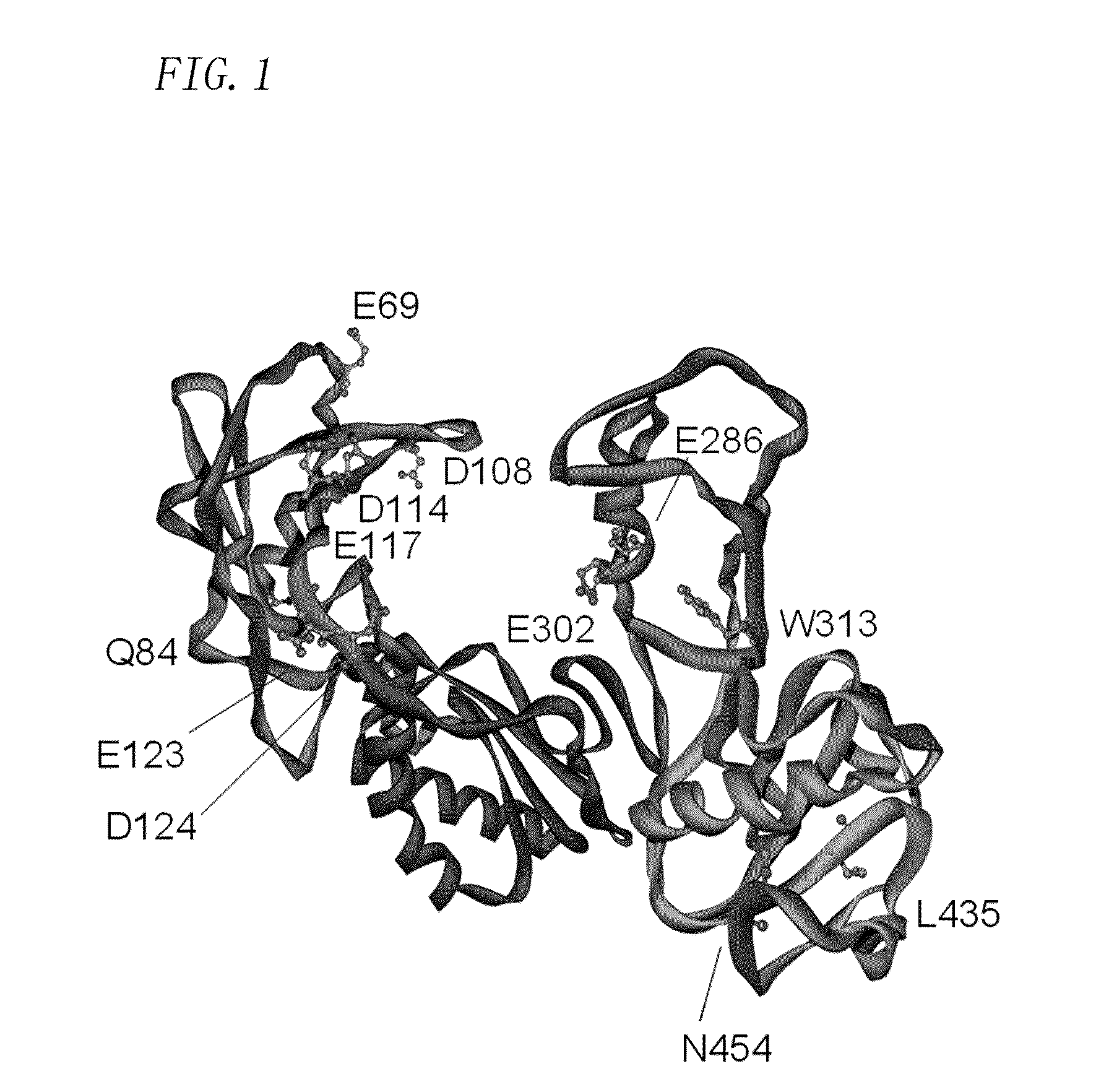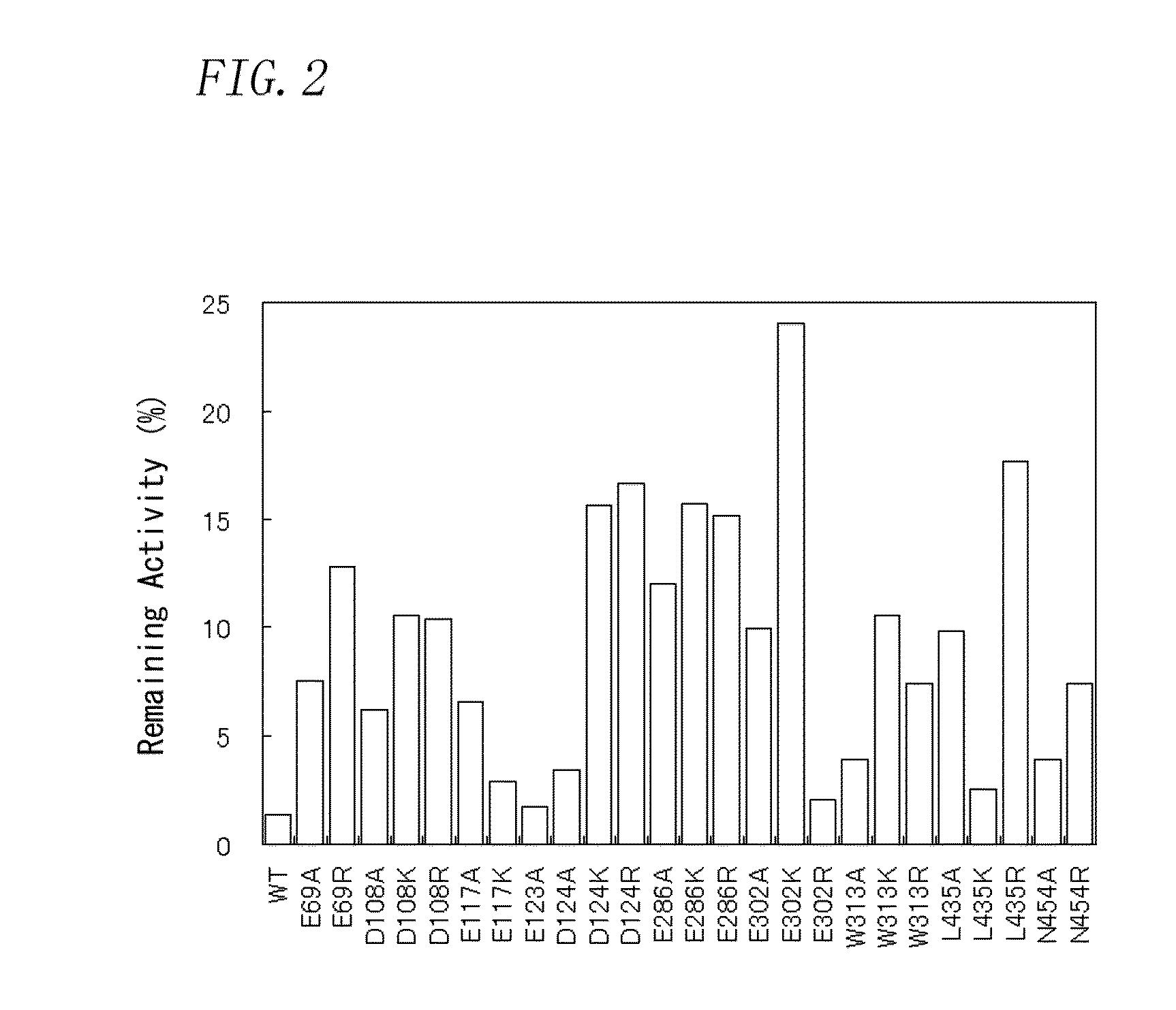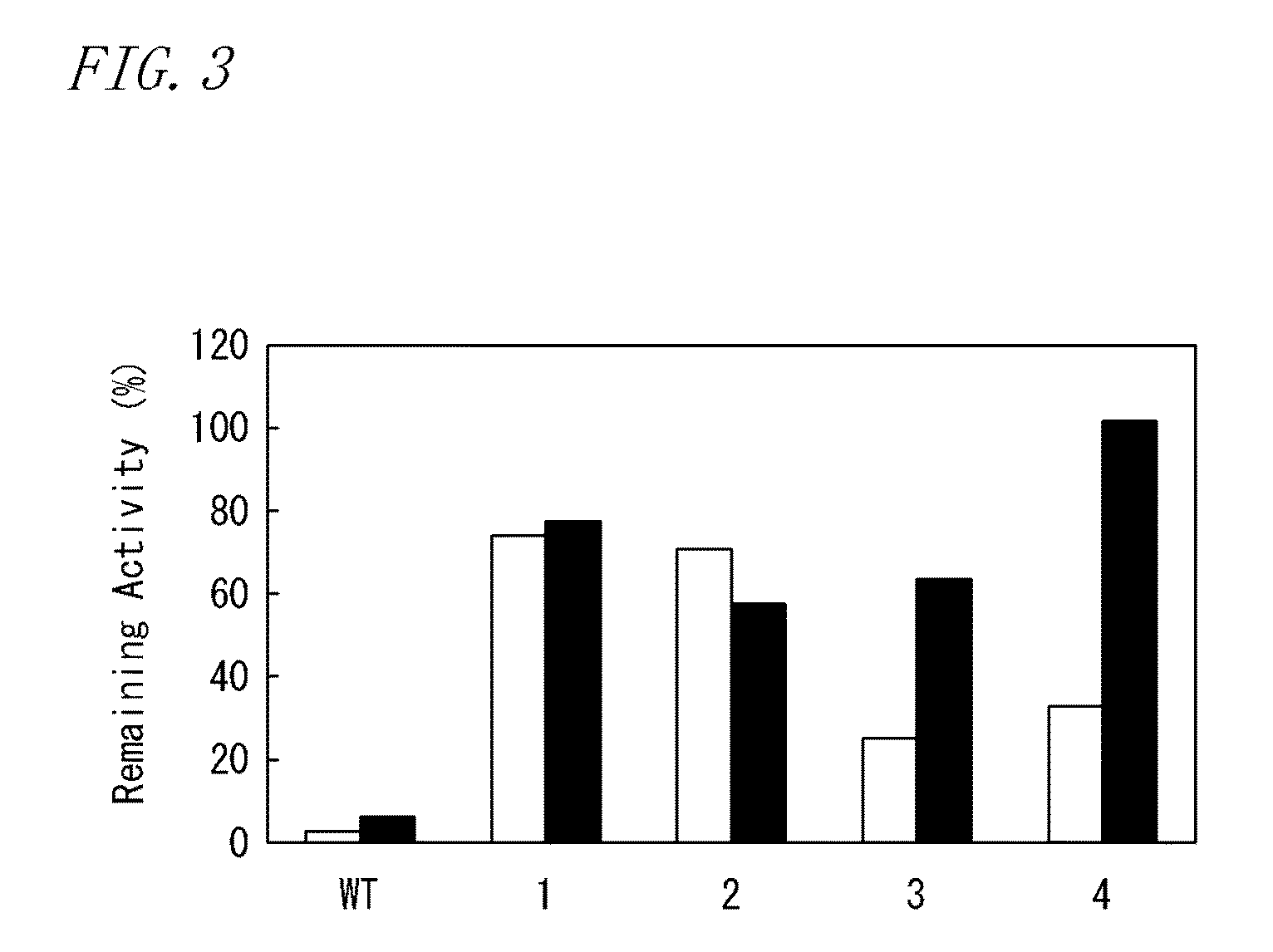Variant reverse transcriptase
a reverse transcriptase and reverse transcript technology, applied in the field of mutation reverse transcriptase, to achieve the effects of high general versatility, excellent properties, and high thermal stability
- Summary
- Abstract
- Description
- Claims
- Application Information
AI Technical Summary
Benefits of technology
Problems solved by technology
Method used
Image
Examples
production example 1
[0191]A DNA (SEQ ID NO.:1) encoding a wild-type MMLV reverse transcriptase (hereinafter, also simply referred to as “WT”) was inserted into a pET-22b(+) plasmid, to give an expression plasmid pET-MRT.
[0192]Escherichia coli BL21 (DE3) was transformed using the resulting plasmid. The resulting cell was cultured at 30° C. in L-broth containing 50 μg / mL ampicillin, to give a transformed cell.
[0193]Subsequently, the transformed cell was inoculated into 3 mL of L-broth containing 50 μg / mL ampicillin and incubated at 30° C. for 16 hours while shaking. Thereafter, the transformed cell was cultured with an autoinduction system {manufactured by Novagen, trade name: Overnight Express Autoinduction System}, to express a protein.
[0194]A bacterial lysis reagent {manufactured by Promega KK., trade name: FastBreak Cell Lysis Reagent} contained in a protein purification system {manufactured by Promega KK., trade name: HisLink Spin Protein Purification System} was added to the resulting culture, to l...
production example 2
(1) Design of Mutation
[0198]In order to substitute a negatively-charged amino acid residue in a region related to the interaction with a template primer in WT (a region corresponding to a threonine residue at position 24 to a proline residue at position 474 in the amino acid sequence shown in SEQ ID NO.: 2) for a positively-charged amino acid residue (a lysine residue or an arginine residue) or a nonpolar amino acid residue (an alanine residue), a primer for a site-directed mutation was designed.
[0199]As an amino acid residue to be substituted (a negatively-charged amino acid residue), 7 residues (Glu69, Gln84, Asp108, Asp114, Glu117, Glu123, and Asp124) located in a fingers domain of the region, 3 residues (Glu286, Glu302, and Trp313) located in a thumb domain, and 2 residues (Leu435 and Asn454) located in a connection domain were selected. The localization position of amino acid residues to be substituted selected in Production Example 2 in the wild-type MMLV reverse transcriptase...
example 1
[0216]From the amino acid residues to be substituted evaluated in Test Example 1, the amino acid residues to be substituted which were evaluated as AA were selected. Subsequently, from the mutants with the selected amino acid residues substituted with other amino acid residues, four types of mutants (E302K, L435R, D124R, and E286R) were selected, in order of high remaining activity.
[0217]The same procedures as in Production Example 2 were carried out except that primers designed so as to generate the substitution of the selected four types of amino acid residues were used in place of primers designed so as to generate the amino acid residue substitution shown in Table 1 in Production Example 2, to give a multiple mutant of MMLV reverse transcriptase (D124R / E286R / E302K / L435R). As the result of SDS-PAGE, the resulting multiple mutant was confirmed to show a single band of 75 kDa.
[0218]The score of magnitude of effective charge in a DNA interaction region of the multiple mutant was cal...
PUM
| Property | Measurement | Unit |
|---|---|---|
| pH | aaaaa | aaaaa |
| pH | aaaaa | aaaaa |
| reaction temperature | aaaaa | aaaaa |
Abstract
Description
Claims
Application Information
 Login to View More
Login to View More - R&D
- Intellectual Property
- Life Sciences
- Materials
- Tech Scout
- Unparalleled Data Quality
- Higher Quality Content
- 60% Fewer Hallucinations
Browse by: Latest US Patents, China's latest patents, Technical Efficacy Thesaurus, Application Domain, Technology Topic, Popular Technical Reports.
© 2025 PatSnap. All rights reserved.Legal|Privacy policy|Modern Slavery Act Transparency Statement|Sitemap|About US| Contact US: help@patsnap.com



